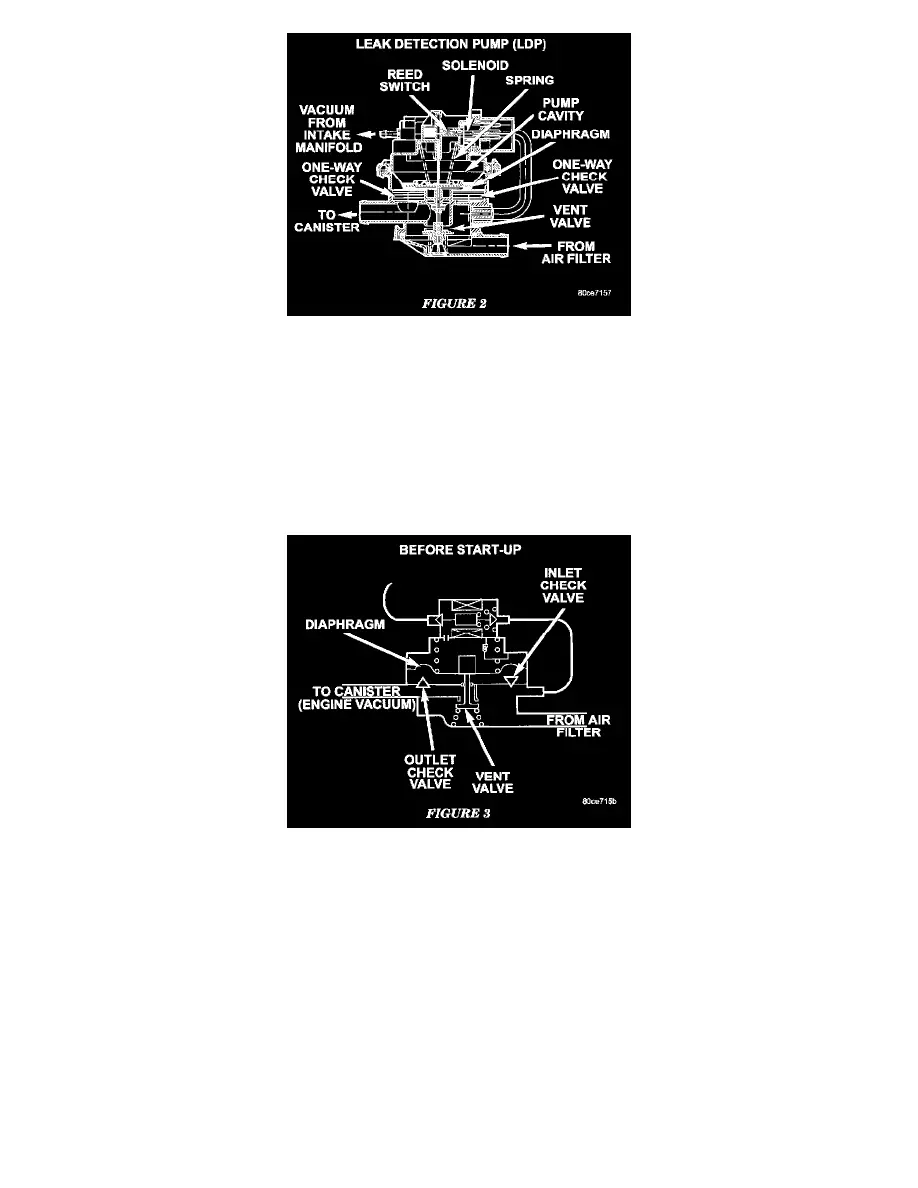Sebring LXI Sedan V6-2.7L VIN R (2002)

Figure 2
The LDP assembly consists of several parts. The solenoid is controlled by the PCM, and it connects the upper pump cavity to either engine
vacuum or atmospheric pressure. A vent valve closes the EVAP system to atmosphere, sealing the system during leak testing. The pump
section of the LDP consists of a diaphragm that moves up and down to bring air in through the air filter and inlet check valve, and pump it
out through an outlet check valve into the EVAP system.
The diaphragm is pulled up by engine vacuum, and pushed down by spring pressure, as the LDP solenoid turns ON and OFF. The LDP
also has a magnetic reed switch to signal diaphragm position to the PCM. When the diaphragm is down, the switch is closed, which sends a
12 V (system voltage) signal to the PCM. When the diaphragm is up, the switch is open, and there is no voltage sent to the PCM. This
allows the PCM to monitor LDP pumping action as it turns the LDP solenoid ON and OFF.
Figure 3
Lop At Rest (Not Powered)
When the LDP is at rest (no electrical/vacuum) the diaphragm is allowed to drop down if the internal (EVAP system) pressure is not greater
than the return spring. The LDP solenoid blocks the engine vacuum port and opens the atmospheric pressure port connected through the EVAP
system air filter. The vent valve is held open by the diaphragm. This allows the canister to see atmospheric pressure.
